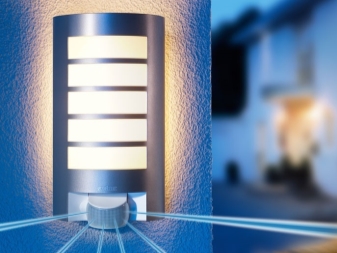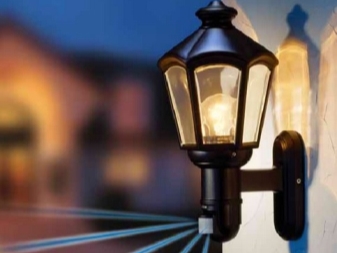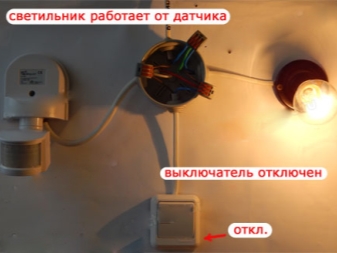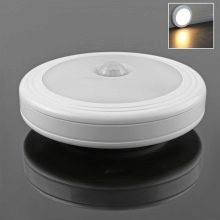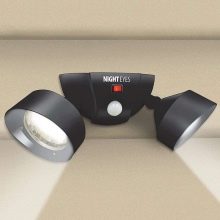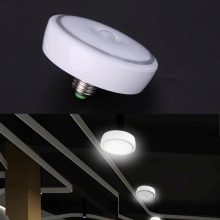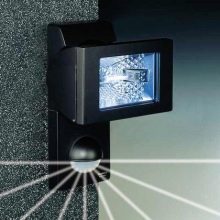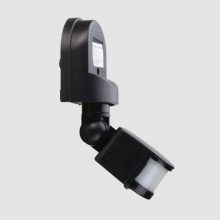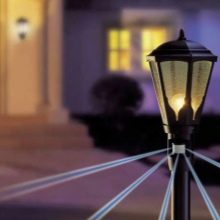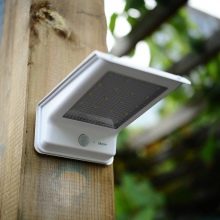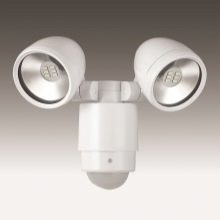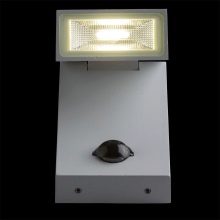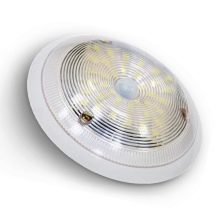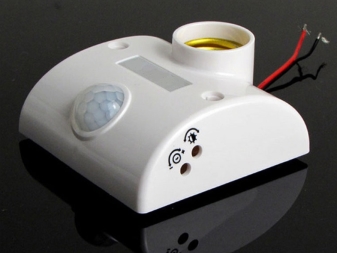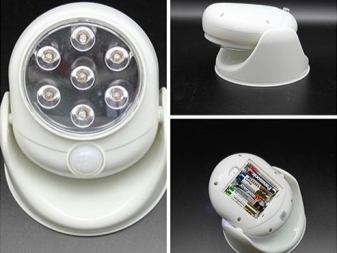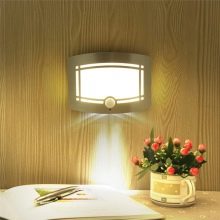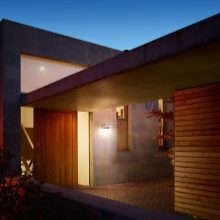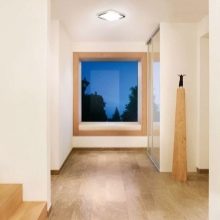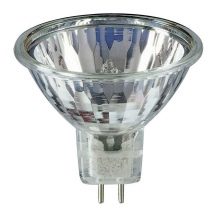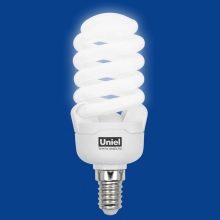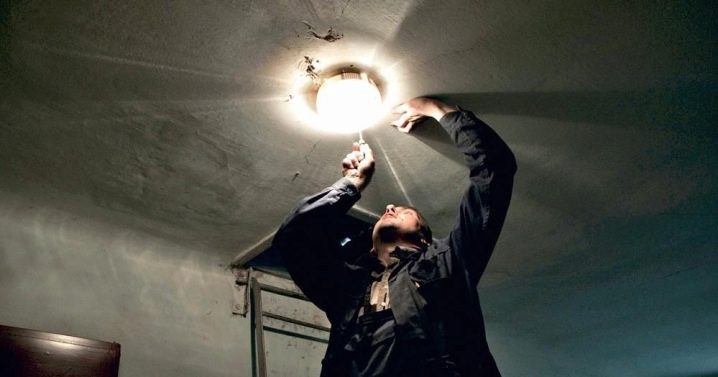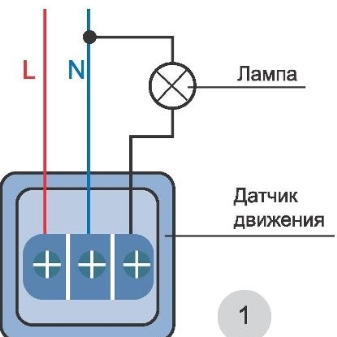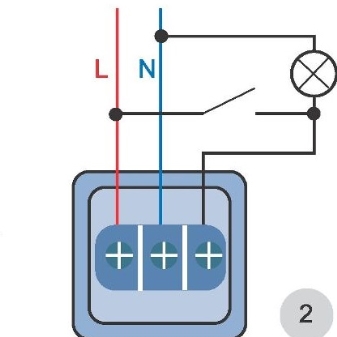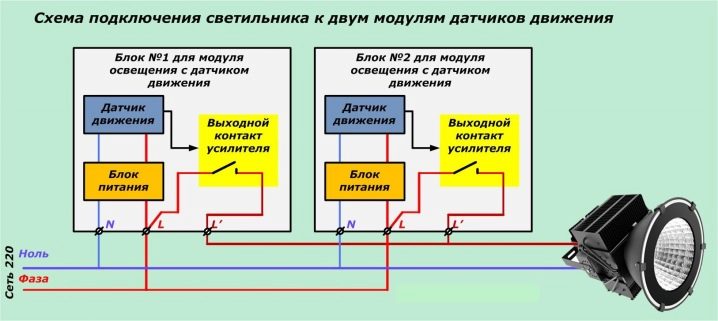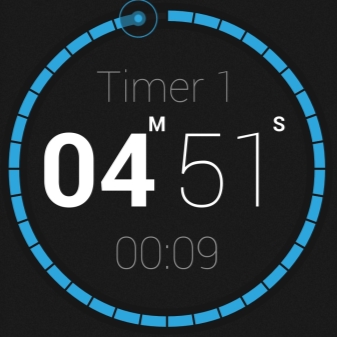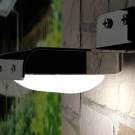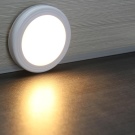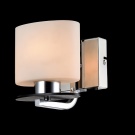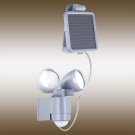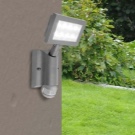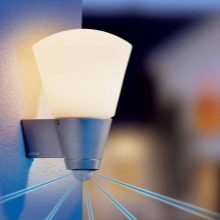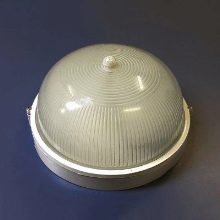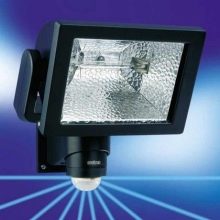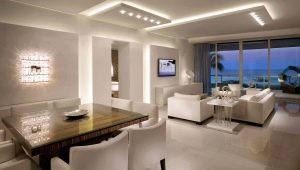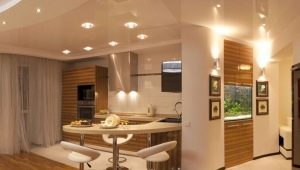Lamps with motion sensors
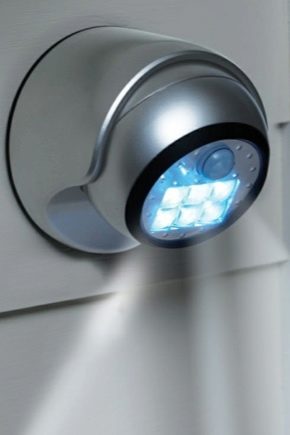
Lighting systems equipped with a motion sensor were designed to provide greater comfort in people's lives. They became popular due to the fact that they allow to save the family budget, they are simple and convenient during installation and in everyday life. Such lamps can be called a reliable assistant to the owners.
Their installation is considered the first step to full automation of living space.
Special features
This type of luminaires compared to conventional devices with a switch has goals for a number of advantages for consumers:
- As a result of the fact that the light is turned off only when a moving person leaves a certain zone, electrical energy is significantly saved. According to statistics, the family saves 40-50% of the payment for the light. Cases when someone forgot to turn off the light, and the counter is spinning, almost never happens.
- The use of such a lighting controller in the house and outside it significantly increases the comfort of residents. Illumination appears automatically, you do not need to look for a switch button in the dark.
- Universality of use is explained by the fact that the device can be used in any weather, both in the house and on the site, in various public places.
Principle of operation
The work of luminaires with a motion sensor is based on its automatic response to moving objects. This property is explained by the fact that the device has a built-in sensor that recognizes any change in temperature, as well as even slight fluctuations in the air and changes in heat waves. As a result, the relay is triggered when a person appears in a certain area, and the light automatically comes on. If there is no movement, the circuit is broken and the lighting is turned off.
Kinds
Today, there are devices with a motion sensor on the market, such as:
- Infrared devices. They are often used in living rooms and premises in production. The principle of operation is based on changes in temperature in the environment.When an object appears, an extremely sensitive photo relay will immediately respond to it. The device is absolutely safe, it can be precisely adjusted by the parameters of the range and angle of detection.
Due to this, the lamp is indispensable in everyday life, however, it also has a significant drawback - it is necessary to move constantly, otherwise with a long absence it will turn off the light.
- Ultrasonic lamps are most often used outside the home. They work as a result of the sound that is transmitted to the receiver, and if the signal is interrupted - the light turns on. This model is used in large apartments along with other lamps. Of the advantages of the lamp are its relatively low price, the ability to identify objects in clothing of any density, high performance in conditions of humidity and dust.
The disadvantages include short range, the need for sudden movement, discomfort for pets.
- Microwave systems operate on the principle of ultrasonic, but not the sound, but the radio wave is transmitted to the receiver. If it is interrupted, a light appears. These lamps are used both at home and outside.They can detect an object even behind a thin barrier and react to rather weak movements, but at the same time, the roads are less safe for the body and can be triggered by mistake.
- Various types of sensor are mounted in the combined model., which makes it possible to expand their scope. Today, for example, similar models of the overhead view nightlight are popular, having an infrared sensor. The indicator is sensitive to the degree of light outside the window, which closes the contact.
Another task is his work exclusively in the presence of a moving person.
How to choose?
Choosing a lamp, you should consider the place of its use. In residential buildings such lamps are mounted in offices, bedrooms, kitchens and stairs, in corridors, bathrooms, as well as in wardrobes, cupboards and loggias. You can purchase overhead or embedded models, the latter are used to a greater extent for light accents in the interior. The most important advantage of the overhead type lamp is the absence of the need for installation work.
For indoor use overhead lamps are available, which differ in the method of attachment.Modern design have wall models. They are often installed infrared motion sensor, mounted on stairs, landings and corridors. Ceiling systems are characterized by a flat shape and an ultrasonic mechanism of action.
Depending on the type of food produced:
- Wired models that are included in the plug and are built into the main power line.
- Wireless devices do not require the inclusion of a power outlet, and are powered by batteries, solar panels, most often equipped with an infrared sensor.
In a residential apartment or private house, touch lamps are often installed with a network connection. It is worth noting that many homeowners are now switching to full autonomy, although wireless technologies are still more often used in the yard or in the garden.
In addition, stand-alone lamps are convenient to use in wardrobes, drawers and wardrobes, as well as on the street.
If we talk about the choice of the type of lamps, then the simplest option can be considered the traditional one having a filament. It can be widely used in any living room, but this is not the best option for outdoor conditions, since its contact with water can impair its impermeability.Experts recommend buying fluorescent, halogen, or other models with built-in sensors. They will resist the impact of the natural environment and will last for a long time.
The first in popularity are LED because of their efficiency and convenience. Fluorescent lamps with sensors are widely used in large areas. Halogen lamps are often installed on the ceilings, caps in the closet.
How to connect?
Connection of the considered devices should be made strictly in accordance with the manufacturer’s scheme. Overall, the installation is quite simple. In the design, you can select the device itself and the sensor, which must be connected to the network and set so that the angle of coverage is maximum, this is especially important if the room is passable.
Therefore, before all manipulations, the installation location of the sensor is selected according to the movements of the owners of the house, taking into account the doorways.
The sensor with respect to the luminaire may be, for example, in the center of the room, and the sensor itself - at the entrance to it. Models with integrated sensors are simpler to install and cover space to a greater extent.But in this case there is no possibility of separate installation of elements.
There are such connection schemes as direct and workaround. In the first case, the lamp is directly connected to the sensor and turns on only in the automatic mode. However, it should be borne in mind that with sudden power surges, the indicator may burn out, so professionals advise using a standard keyboard along with a touch switch. This is called a bypass circuit, the installation of which is significantly more expensive. To do this, all the contacts of the lamp and the sensor are connected to the contacts of the switch and the network cable.
The phase lead from the sensor leads to the switch, it is not fixed directly to the phase of the network. Zero fail in the network, if necessary, ground. All actions are accompanied by isolation. Recommended for ease of use and junction box.
If battery power is used, the installation also takes place, but the connection is made to the battery terminals.
Sometimes it is necessary to work several sensors together in the same electrical circuit. This is true if the purchased sensors have a small spectrum of work, as a result there is no coverage of the required area.Then it is necessary to connect all motion sensors on the same phase, and they should be included in parallel.
After the implementation of all work regulate the sensor. Setup is carried out according to the manufacturer's instructions, taking into account the convenience of the owners. The housing of the device is equipped with three types of regulators for adjusting the degree of sensitivity, delay time off and light level. These settings are able to adjust the lamp operation in any operating conditions. Initially, all indicators are set either by the manufacturer, or by the owner.
If the owner of the luminaire with a built-in sensor does not know the correct values of the settings, then it is better not to do it yourself and turn to experts. After all, if the wrong indicator is set, the light will not be enough, the sensor can be triggered constantly or, on the contrary, not triggered when it is required.
In general, when connecting, it is necessary to observe a number of security measures, including:
- Turning off the power in the room before starting work.
- Follow the installation instructions carefully.
- If after installation the device does not work, you should consult with a professional.
- When working, make sure that there is no moisture, no smoke or no fire.
How to disable?
The sensor, as shown above, closes the circuit, and light appears, but it cannot break the contact. It does not matter whether the built-in sensor or not, it only works for switching on, and here the question arises how to turn off the device. For this and use switches. However, most modern devices solve this problem because they have a built-in mechanism for limiting or shutting down, which is called a countdown timer.
Such a system includes two types of relays operating in opposite modes — the first turns on and the light comes on while the second relay turns off the lights after a time reference.
Operating rules
The weak point in such a lamp are sensory elements.
Taking into account a number of rules and requirements will preserve its properties and will extend the service life:
- Providing extensive coverage. A number of large objects, which, as a rule, include house flowers, hanging furniture, volumetric draperies and others will make it difficult to detect the object, which will cause a malfunction of the device.Even the correct setting of the sensor, which in the end will give the wrong signals, will not protect against this. As a result, the chain will constantly close-open, an overload will occur and the device will fail.
- Keeping the instrument clean. It is regularly necessary to remove dust and dirt using a soft dry cloth.
- The use of the system according to the purpose, the prevention of increased loads, if not provided for by the scheme
- Instant disconnection of the device from the network in the presence of damage to the insulation or its case.
The implementation of these rules in everyday life will provide an opportunity to prevent accidents and to keep the lamp in working condition for a long time.
In general, it is worth to highlight such advantages of equipment with sensors as:
- Savings on electricity bills and a large selection of types of lamps used.
- Ability to adjust the accuracy and time.
- A wide range of models on the modern market, which makes it possible to diversify any interior.
It may be noted and disadvantages:
- The need to make adjustments to the wiring. This is especially inconvenient when the room is completely renovated and decorated.
- Disruptions in the sensitivity of the sensors, which can occur with the slightest movements, overloads in the circuit, constant switching on and off of lamps. The sensor may also have a weak sensitivity, which will cause the need to make additional movements for its proper operation.
The advantages of the models under consideration are much greater. If you choose the right device and install it, then the disadvantages will disappear.
Therefore, at present, lamps with a motion sensor for homes, open spaces can be called not a luxury item, but a necessity, as evidenced by their wide use in everyday life.
On how to connect a spotlight with a motion sensor, you can learn from the video below.




